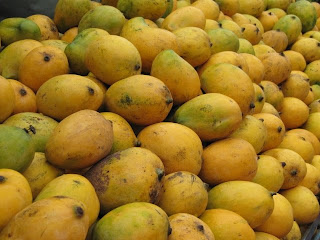 Today is our last day in India...We leave very late or very early, depending on how you view 2:35 a.m. Last night we had a farewell dinner, in which I and 3 friends sported our newly purchased saris. It was a blast to have the hotel staff come to our rooms and help us dress, and I think they enjoyed our Beatles renditions as well. It was a bit like prom, without the guys along. We had to say good-bye to many newly made friends of the USIEFI staff and begin saying good-bye to one of the most remarkable people I met here, our tour guide and general life-saver, Gagan. It was bittersweet, as most people are beginning to think about the jobs they have waiting for them on Monday, and yet realizing how many friendships we have cultivated in these past few weeks. Living in a university town has made me more used to this type of leave taking than some others, but it's still not the most pleasant part of travel.
Today is our last day in India...We leave very late or very early, depending on how you view 2:35 a.m. Last night we had a farewell dinner, in which I and 3 friends sported our newly purchased saris. It was a blast to have the hotel staff come to our rooms and help us dress, and I think they enjoyed our Beatles renditions as well. It was a bit like prom, without the guys along. We had to say good-bye to many newly made friends of the USIEFI staff and begin saying good-bye to one of the most remarkable people I met here, our tour guide and general life-saver, Gagan. It was bittersweet, as most people are beginning to think about the jobs they have waiting for them on Monday, and yet realizing how many friendships we have cultivated in these past few weeks. Living in a university town has made me more used to this type of leave taking than some others, but it's still not the most pleasant part of travel.
This morning I went with 3 friends to visit the Gandhi Museum in Delhi. It was inspiring and humbling, and his message to the right is one of the messages I'd like to close my blog with, because I think it says it all.
The second message, in lieu of a Hindu deity story (I'm going to wait until I get back to the states to award contest awards, so there is still time) is a severe oversimplification of Hindu philosophy that I think speaks to the value of travel, to seeing the "us" in others, and affirming that unity. Yesterday at our debriefing session an eloquent art historian told this quite beautifullly.
In the beginning, there was nothing. Then there was a rhythm, and the rhythm was an ocean. Everything came from that ocean, all flora, all fauna, everything. Our only salvation is to get back to the ocean. The day I realize there is no difference between you or I, and that god is within each of us equally, that day I can say I've got my salvation. That is the one truth. We all come from the same source, and will return to the same ocean. You make take as long as you want to reach salvation, and take any path you like, such as yoga, or intelluctualism, or service, or devotion. It's up to you. However, the only truth is that we are all equal and god is equally within us all.
 Thank you for taking this journey with me. I have posted some last photos (see link below), and will post more video when I return to the states.
Thank you for taking this journey with me. I have posted some last photos (see link below), and will post more video when I return to the states. NAMASTE















































